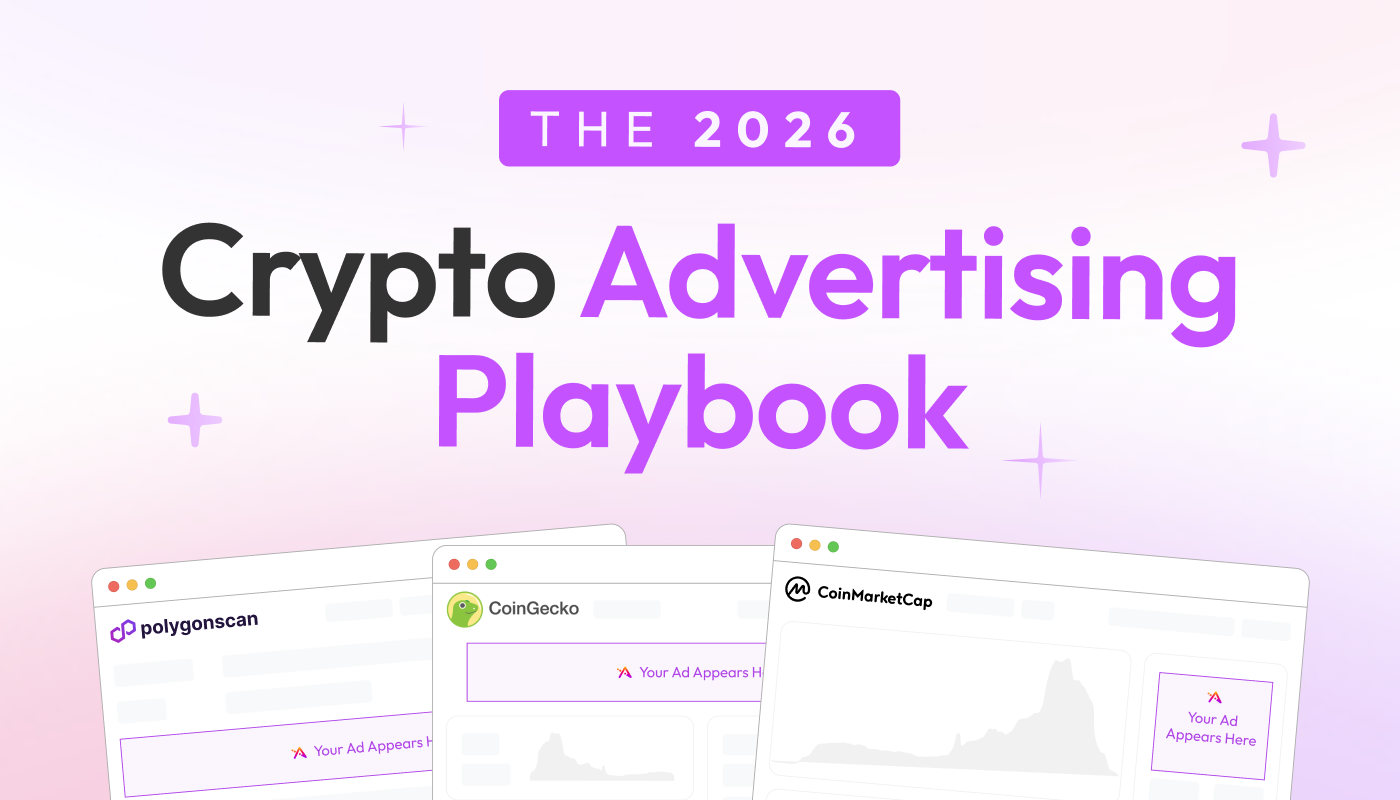Leveraging Web3 marketing for maximum impact
.png)
From misinterpreting what success looks like to struggling to connect to the right users, Web3 is still a free-for-all. Marketers who are familiar with the realities of Web2 (and champion them) are now facing specific challenges that are part of this new frontier.
The good news is that data-driven Web3 tools can help you make the most of this growing space, and ensure that you’re investing in campaigns that resonate with your audiences and generate engagement and results that matter.
Here’s a breakdown of the challenges that Web3 marketers are currently facing and how they can overcome these roadblocks for a major boost to sales and brand reputation.
Some of the most vocal users declaring their enthusiasm for your brand may have zero intention of actually paying for your product.
Web3 marketing challenges: Translating online hype and cutting through the noise
.png)
Despite the technological tools and advancements that are part of Web3, the marketing process today in the space is still very much a shot in the dark. Because of the inherent lack of user identity that comes along with Web3, it can be harder than ever to make contact with your brand’s ideal customers or leads, as well as understand where to find them and the best ways to appeal to them.
Without powerful data-driven insights, Web3 marketing can result in attracting random people who aren’t going to be right for the product you’re selling. For each of the channels you leverage, you can never close the loop of the marketing investment (time and money) in order to generate a reaction.
Adding to the challenge in gauging whether your campaigns are working is that online hype can easily be misinterpreted. A ton of buzz around your bran’s most recent development may not result in sales or conversions. Counterintuitively, some of the most vocal users declaring their enthusiasm for your brand may have zero intention of actually paying for your product.
Building a long-term community and level of excitement around your brand is also extremely difficult. While it’s likely that you’ll be able to create a conversation based around your product launch initially, the hype surrounding a new token or NFT simply won’t last, as users move on to the next big thing.
You may end up attracting users that pump and dump and fail to win over people who will actually use your product or hold your asset for the long-term. Consider stock investors - generally speaking, they’re not going to be genuinely interested in what a company does. Rather, their primary focus is on how much they can make by investing at the right time and reselling an asset later. That same concept applies here.
Misleading measurements, irrelevant KPIs, and a misunderstanding of the landscape
A fundamental component of marketing is leveraging measurements and KPIs in order to determine if a campaign is effective. But with Web3, many marketers are still using Web2 measurements and KPIs that aren’t translating into sales and revenue.
Quality trumps quantity, every time
Some may be under the impression that an outreach effort that results in a large following or community with impressive numbers is indicative of success. But, as marketers, we know that’s often not the case.
There is a huge difference in impact on your project between paying $500 to a Twitter shiller to shill for your brand and boost your follower count by 2,000 followers, and partnering with a less popular micro-influencer who will bring you 50 highly engaged, relevant followers.
What “relevant” means varies from brand to brand, but it could look like actual buyers, active community members and followers, investors, educators, or anyone else who positively contributes to your project, community, and sales.
While the first option of enlisting an influencer for an instant follower boost results in more impressive optics, it’s the second scenario that actually brings value to your project.
Many of us are transitioning from a Web2 reality into the Wild West of Web3, without the right tools and guidance to help us fully understand the ecosystem, spot opportunities, and analyze whether or not what we’re doing is working.
Clicks, reactions, and number of users: Why they’re not as useful as you may think
Other examples of KPIs that aren’t ideal for determining whether your brand and products are resonating with your target audiences include the number of clicks or reactions to a social media post, the number of users on your white-list, and focusing on the number of messages in your Discord channel instead of the amount of active users within that space.
Are you asking the right questions?
You may find that your distribution channels are not analyzed by your target audience, meaning that you’re attracting irrelevant people or just shouting into the void. Again, random.
It’s critical that your Web3 marketing strategy addresses the following questions:
- Where are your ideal customers hanging out?
- What do they react to? What are their fields of interests?
- Who are they reacting to? Which figures or influencers resonate with them?
- What assets do they hold or trade? How active are they on the blockchain? How long do they usually hold an asset?
A lack of knowledge may be holding you back
An inadequate understanding of the realities of the Web3 landscape can spell disaster for your campaign. Many of us are transitioning from a Web2 reality into the Wild West of Web3, without the right tools and guidance to help us fully understand the ecosystem, spot opportunities, and analyze whether or not what we’re doing is working.
It’s surprisingly easy to end up marketing to the wrong Web3 segment. That could look like marketing your NFT gaming product to an NFT audience, but not winning over any gamers.
Knowing your competition is also critical, and often overlooked by Web3 marketers. You need to understand what other companies in the space are doing right and fully embrace your differentiators, which help you stand out in a crowded landscape.
Not understanding enough about your competitors also means that you end up losing out on great audiences that have purchased similar products to yours, and who could potentially be interested in your project.
Learning from your own valuable users is mission critical for Web3 marketing success. You should know what they’re doing in the ecosystem when they’re not buying from you. Their on-chain and social activity (off chain) preferences should be understood by your brand.
Segmenting your audience is crucial for gaining valuable insights into your user behavior and preferences. You should strive for a deep understanding of the following segments, along with any others that are industry or market-specific for your project:
- Persistent but silent Asset holders
- Diamond hands
- Vocal community members
- Loyal followers
- Grumpy whales
- Addicted power users
- Early birds (adaptors)
Data-driven outreach to your target audiences, at your fingertips

So with all this in mind, how do you own your Web3 marketing and maximize it for your project’s benefit? It starts with identifying, defining, and reaching out to your ideal target audiences, while leveraging industry-leading technology for smart, data-backed insights into the best ways to do this and to effectively track your impact and success.
Within Addressable, you can create and build your ideal audiences, thanks to our platform that’s powered by on-chain and social media data. The first step is defining the people who are most likely to buy your token, mint or trade your NFT, play your game, or use your protocol.
Addressable gives you the insights you need to gain their attention organically, as we tell you what’s trending specifically for this audience at the moment.
Our platform identifies the influencers that are most followed by your audiences, so you can promote smarter and more effectively by enlisting the personalities that matter most to them.
With Addressable, you’ll see the communities in which your audiences are most active and meet your target customers there. Addressable also highlights the ambassadors and members who are most influential within those communities, so you can directly engage with them for promotional or outreach efforts.
Targeted ads are also far more impactful and compelling with Addressable. We give you the option to create a custom audience and approach the users who are most valuable and likely to translate to sales.
Our intuitive, straightforward campaign tracker provides you with round-the-clock, accurate attribution for each of your marketing actions and purposes, so that you can monitor your outreach’s impact and success.
Optimization is easier than ever, as Addressable provides you with ROI measurements and insights that tell you what’s working. You have a clear path for scaling up effective efforts, and you can swiftly cut back on actions that aren’t benefiting you.
The platform is perfect for A/B testing that helps you measure the effectiveness of your existing ideas and try out new strategies.
For more on how partnering with Addressable can help you streamline your Web3 marketing efforts and make the most of this developing market, get in touch with us today.








